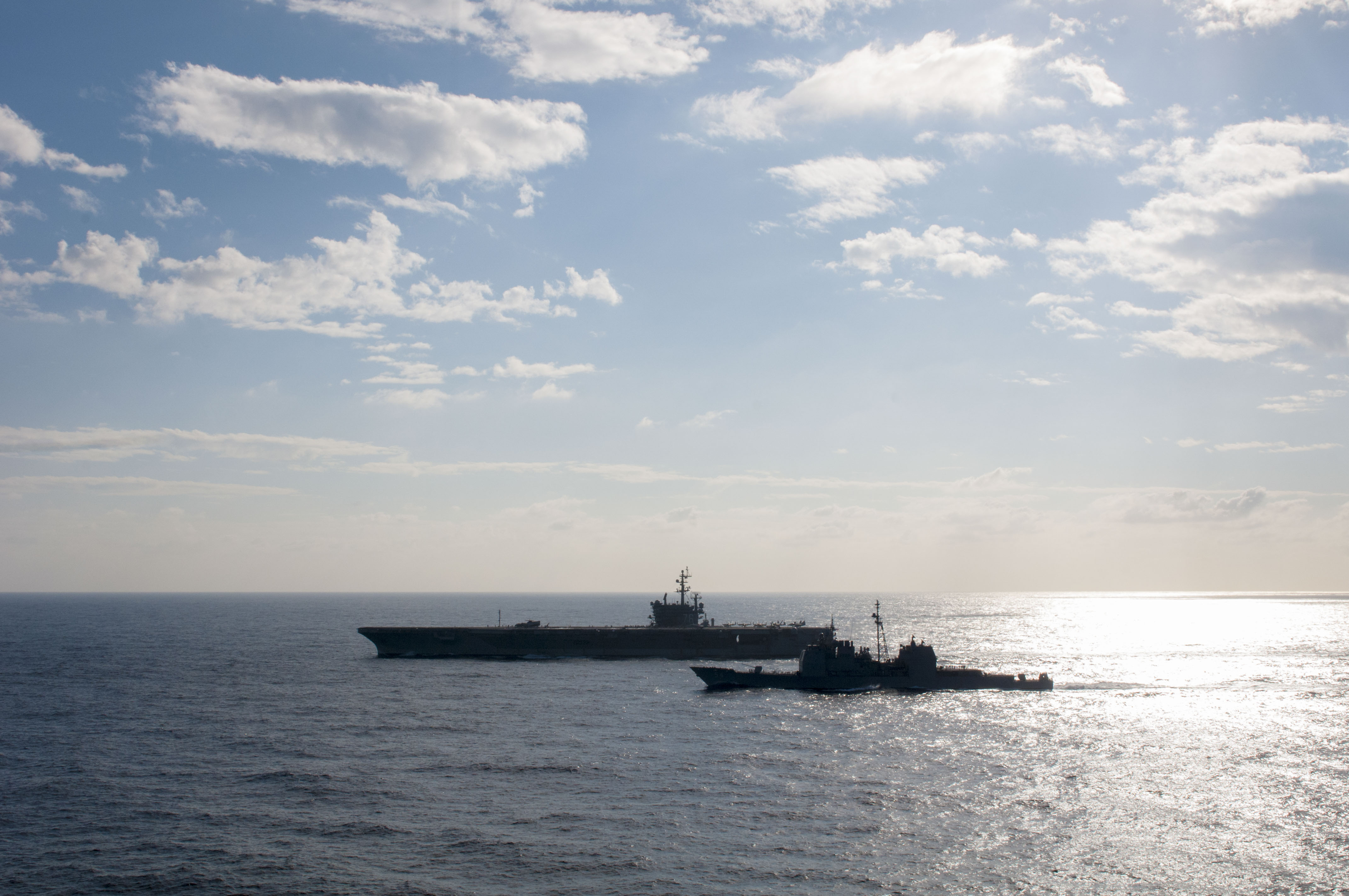
SAN DIEGO — When the Navy once again asked Congress to approve a years-long phased modernization plan for its unmodernized cruisers – a request that has been denied for several years now – service leaders included two provisions to allay lawmakers’ ongoing fears: More than half a billion dollars to fund cruiser operations and modernization and legislation that would force the Navy to return the cruisers to the fleet.
For several years the Navy has wanted to induct its cruisers into a phased modernization program, allowing the Navy to perform hull work gradually based on shipyard workloads and then inserting electronics at the last minute before getting the cruisers back out to the fleet as one-for-one replacements for the older cruisers set for retirement. This plan, the Navy says, could save about $3 billion dollars in workload efficiencies and ship operating costs, and would make the most of the ships’ remaining service life.
Many lawmakers, however, have made clear they don’t trust the Navy to follow through. Once the ships are in a reduced operating status, lawmakers say, they can’t be sure the Navy will actually modernize the ships and return them to the fleet – the Navy could simply decommission them to save money.
After having this debate over multiple budget cycles, the Navy this year sent Congress proposed legislative language that states the Navy cannot decommission its cruisers without lawmakers’ permission, Vice Adm. Joseph Mulloy, deputy chief of naval operations for integration of capabilities and resources, told USNI News on Wednesday.
“What we didn’t have before was a legislative proposal that went in that made it very clear the secretary of the Navy could not decommission the ships without congressional permission. We have to put them in phased modernization and bring them out per our plan, and it would require congressional approval if we want to deviate from that plan,” Mulloy said.
“SECNAV, he actually in his meeting, he actually said Joe, I want this written. … I want this to have that my hands are tied by Congress. I will bring these ships back. And he put his hands like that (wrists crossed in front of him) in the room, he said I want it written so that my hands are tied, I really am going to bring these ships back. And so we wrote it that way, and it’s now delivered along with the budget.”
Mulloy said the budget request itself reflects this commitment to bring the cruisers back to service.
“We actually made an investment. We added $521 million over the five-year [Future Years Defense Program],” he said.
Previously, the House and Senate armed services committees created a Ship Modernization, Operations and Sustainment Fund (SMOSF, pronounced: SmOhSif) as a bank account to tuck money away for future cruiser costs, much of which would occur outside the FYDP and therefore weren’t visible in the Navy’s budget plans.
“This time, we’re not counting on any money in the SMOSF, we assume the SMOSF would run out in this plan in (Fiscal Year 2020) and we added the money in ’21. And we also added operational dollars and manpower dollars in ’17 to get those ships – some of them through the end of the year, some earlier in the year, basically half year funding – so those seven ships would be able to operate for some period of time during the year.“
Mulloy said that, in total, the message sent is that the Navy is serious about operating the cruisers up until they go into the modernization program, and it’s serious about funding the modernization work and bringing the ships back into the fleet when the time is right.
Last year, during FY 2016 budget talks, Navy Secretary Ray Mabus went as far as saying he’d sign contracts for the hull modernization now as a sign to Congress that he’s serious about getting the cruisers fixed up and back to the fleet as efficiently as possible.
“Whatever proscriptive language they want to come up with that would mandate us – mandate us to buy all the modernization stuff except for the electronics, because that’s going to change somewhat, upfront. Mandate that we sign contracts with shipyards so it would cost us money if we backed out of them,” Mabus told reporters in May 2015.
“I really do think it’s a matter of not quite trusting us, that people have used bad language in the past – layups, decommissionings, things like that,” he said, but added that “there are ways you can do this” that meet Navy needs and quell congressional fears.





